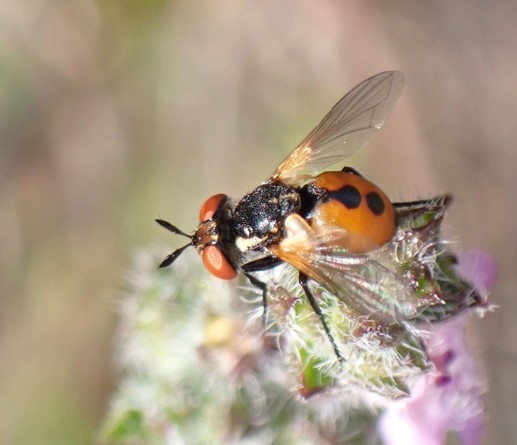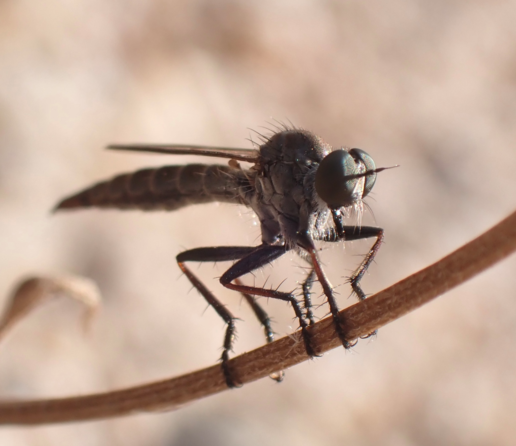Albert Cardona · @albertcardona
1808 followers · 2727 posts · Server mathstodon.xyzFlies galore, of the parasitoid kind:
Tachinid fly, Gymnostoma rotundanum http://www.inaturalist.org/observations/165099855 . The #Tachinidae lay eggs on the surface of their host—often other insects—with such strong glue that removing the egg would kill the host. Often even drop larvae directly on the hosts.
Thick-headed fly, Physocephala visatta http://www.inaturalist.org/observations/165098840 The #Conopidae are internal parasites of bees and wasps—intercepting them in mid flight, the female’s abdomen has a “can opener” to insert an egg between the abdominal tergites of the host.
Beefly, Lasiopa sp. http://www.inaturalist.org/observations/165105614 The #Bombylidae drop their eggs while in flight near the entrance of solitary bee nests. The larvae crawl in and take over the bee’s resources of nectar and pollen, either starving or directly eating the bee larva.
All the adults happily sip nectar; the larvae, meanwhile, rival parasitoid wasps in their lifestyle and effectiveness.
#crete #diptera #insects #entomology #inaturalist #bombylidae #conopidae #tachinidae
Albert Cardona · @albertcardona
1806 followers · 2696 posts · Server mathstodon.xyzFlies galore:
Robber fly, Asilinae family https://www.inaturalist.org/observations/164682340
Bee fly, Bombylidae family, with an uncanny resemblance to a Calliphora fly https://www.inaturalist.org/observations/164650016
Bee fly, Lomatia sp. https://www.inaturalist.org/observations/164565745
#iNaturalist #Diptera #BeeFlies #Bombylidae #Asilinae #entomology #Crete #insects
#insects #crete #entomology #asilinae #bombylidae #BeeFlies #diptera #inaturalist

